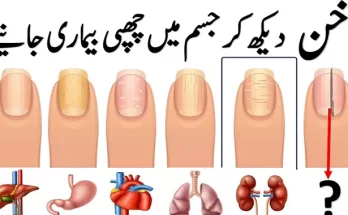
Starting a trip, like going on a road trip or heading to work, can be really exciting. But for some people, feeling sick with nausea and vomiting can take away from the fun. Fear not! With a few simple strategies, you can make your travel experience not only comfortable but also nausea-free. Let’s explore some practical tips to ensure smooth sailing during your next car or bus ride.
Motion sickness occurs when there is a disconnect between what your eyes perceive and what your inner ear senses. This sensory dissonance can trigger feelings of nausea, dizziness, and vomiting, especially during car or bus rides where the motion is constant but not always visible.

Choose the Right Seat:
Your seating arrangement can significantly impact your comfort level during travel. Opt for a seat where motion is least felt, typically in the front seat of a car or over the wings of a bus. By sitting near the vehicle’s center of gravity, you’ll experience less sway and jostling, minimizing the chances of motion sickness.

Maintain Proper Ventilation:
Stuffy and confined spaces can exacerbate feelings of nausea. Ensure adequate ventilation by cracking open a window or using the air conditioning system. Fresh air circulating throughout the vehicle can help alleviate symptoms of queasiness and create a more pleasant travel environment.

Focus on the Horizon:
Combat sensory confusion by fixing your gaze on a stable point in the distance, such as the horizon. By providing your brain with a visual reference point, you can help synchronize your visual and vestibular systems, reducing the likelihood of motion sickness. Avoid reading or staring at screens, as this can exacerbate symptoms.

Stay Hydrated and Avoid Heavy Meals:
Maintaining proper hydration is crucial for warding off nausea and vomiting during travel. Sip on water regularly to prevent dehydration, but avoid consuming large quantities of fluids, as this can increase the sensation of motion in your stomach. Similarly, opt for light, easily digestible snacks rather than heavy meals before embarking on your journey.
Practice Deep Breathing and Relaxation Techniques:
Combat feelings of anxiety and discomfort by practicing deep breathing exercises and relaxation techniques. Focus on inhaling slowly through your nose, filling your lungs with air, and exhaling gradually through your mouth. Pairing deep breathing with progressive muscle relaxation can help alleviate tension and promote a sense of calmness during travel.
Consider Motion Sickness Medication:
If you get very sick from motion, you can try medicines from the store or from a doctor to feel better. Antihistamines such as dimenhydrinate or meclizine are commonly used to prevent and treat symptoms of nausea and vomiting associated with motion sickness. However, it’s essential to consult with a healthcare professional before using any medication, especially if you have underlying health conditions or are taking other medications.
Home Remedies:
In addition to the strategies mentioned above, several effective home remedies can help alleviate symptoms of motion sickness during car and bus rides. These remedies are easy to implement and can provide relief without the need for medication.
Ginger:
Ginger has long been hailed for its anti-nausea properties and is a popular natural remedy for motion sickness. Consuming ginger in various forms, such as ginger tea, ginger candies, or ginger capsules, can help soothe an upset stomach and reduce feelings of nausea.
Consider brewing a cup of ginger tea to sip on during your journey or keeping ginger candies handy to chew on as needed. Alternatively, you can take ginger supplements before traveling to help prevent motion sickness from occurring.
Peppermint:
Peppermint is another aromatic herb known for its ability to calm the stomach and alleviate nausea. Peppermint tea or peppermint oil can be particularly effective in easing symptoms of motion sickness. Brew a cup of peppermint tea and enjoy its refreshing flavor while benefiting from its digestive properties.
If you prefer a more concentrated form, inhaling peppermint oil or applying it to your pulse points can provide quick relief from nausea and promote a sense of well-being during travel.
Acupressure:
Acupressure involves applying pressure to specific points on the body to alleviate various ailments, including motion sickness. One of the most well-known acupressure points for relieving nausea is the P6 or Nei Guan point, located on the inside of the wrist, approximately three finger-widths below the base of the palm.
Applying steady pressure to this point with your thumb or using acupressure wristbands that stimulate the P6 point can help alleviate symptoms of motion sickness. Simply wear the wristbands or massage the P6 point on both wrists as needed throughout your journey to experience relief from nausea and vomiting.
FAQs
FAQ: Can anyone get motion sickness?
Answer: Yes, anyone can get motion sickness. Some people might get it more than others, depending on things like how sensitive they are to movement and their age or health.
FAQ: Is it easier to get motion sickness in cars or buses?
Answer: Yes, but it can be different for everyone. People sitting in certain spots might feel less sick. Bigger vehicles like buses might make some people feel less sick than smaller cars.
FAQ: Can what I eat affect motion sickness?
Answer: Yes, it can. Eating heavy or spicy foods before traveling might make you feel sicker. Eating light and drinking water can help. Ginger can also help calm your stomach.
FAQ: Can exercises or stretches help with motion sickness?
Answer: Not really, but sitting up straight and doing relaxation exercises like deep breathing might help you feel better.
FAQ: Are there any other things that can help with motion sickness?
Answer: Yes, things like wristbands that press on a spot on your wrist can help. Also, there are special glasses you can wear that might make you feel less sick by showing you different images.
Conclusion: Traveling should be fun and not make you feel sick. Try these easy tips to make your trip better and avoid feeling nauseous or throwing up in the car or bus. Remember to sit in a good spot, keep the air fresh, look at the far-away view, drink water, relax, and maybe take medicine if you need it. Also, keep yourself busy with fun things like music or games. By doing these things, you can say goodbye to feeling sick and enjoy your journey. Have a safe trip!






